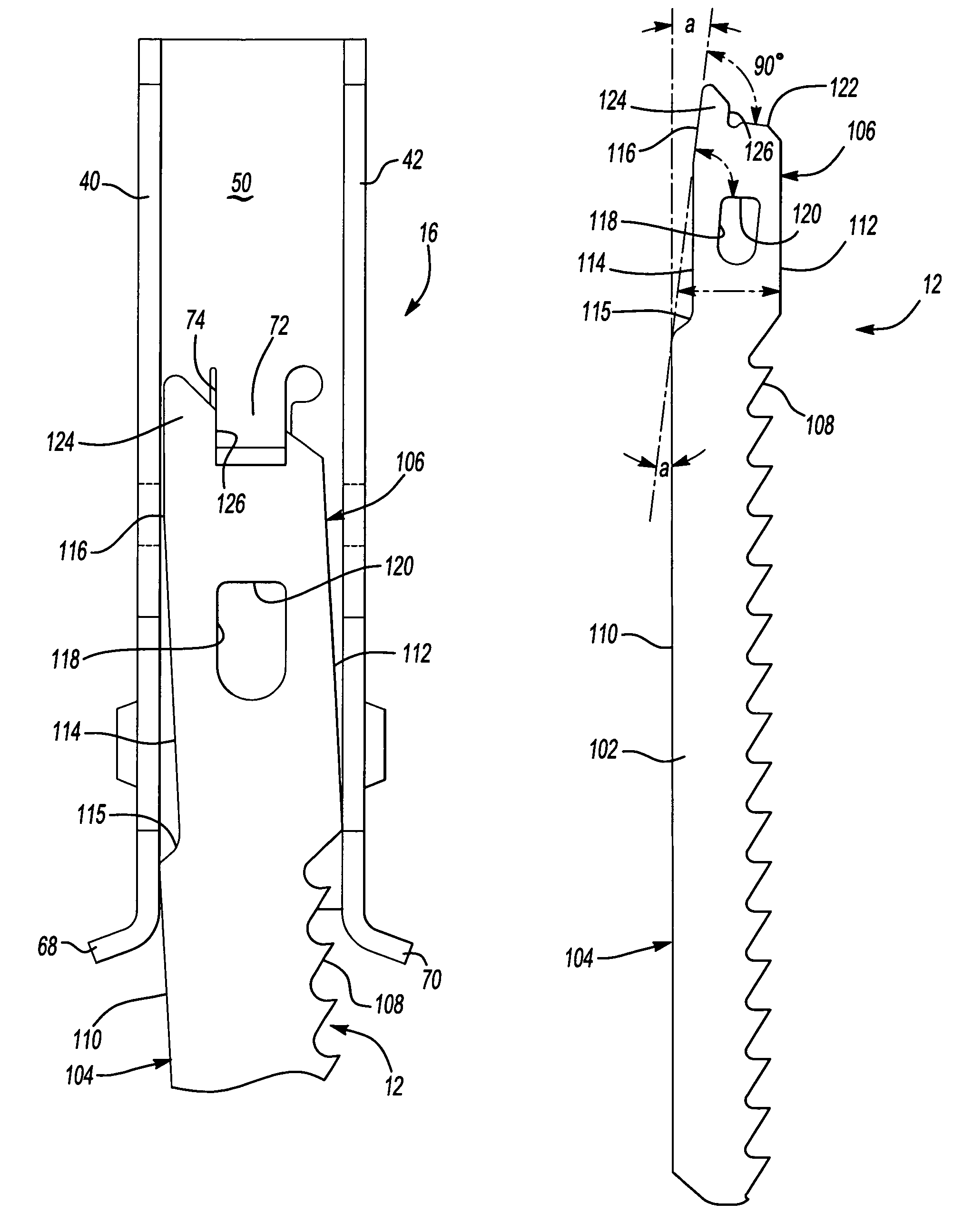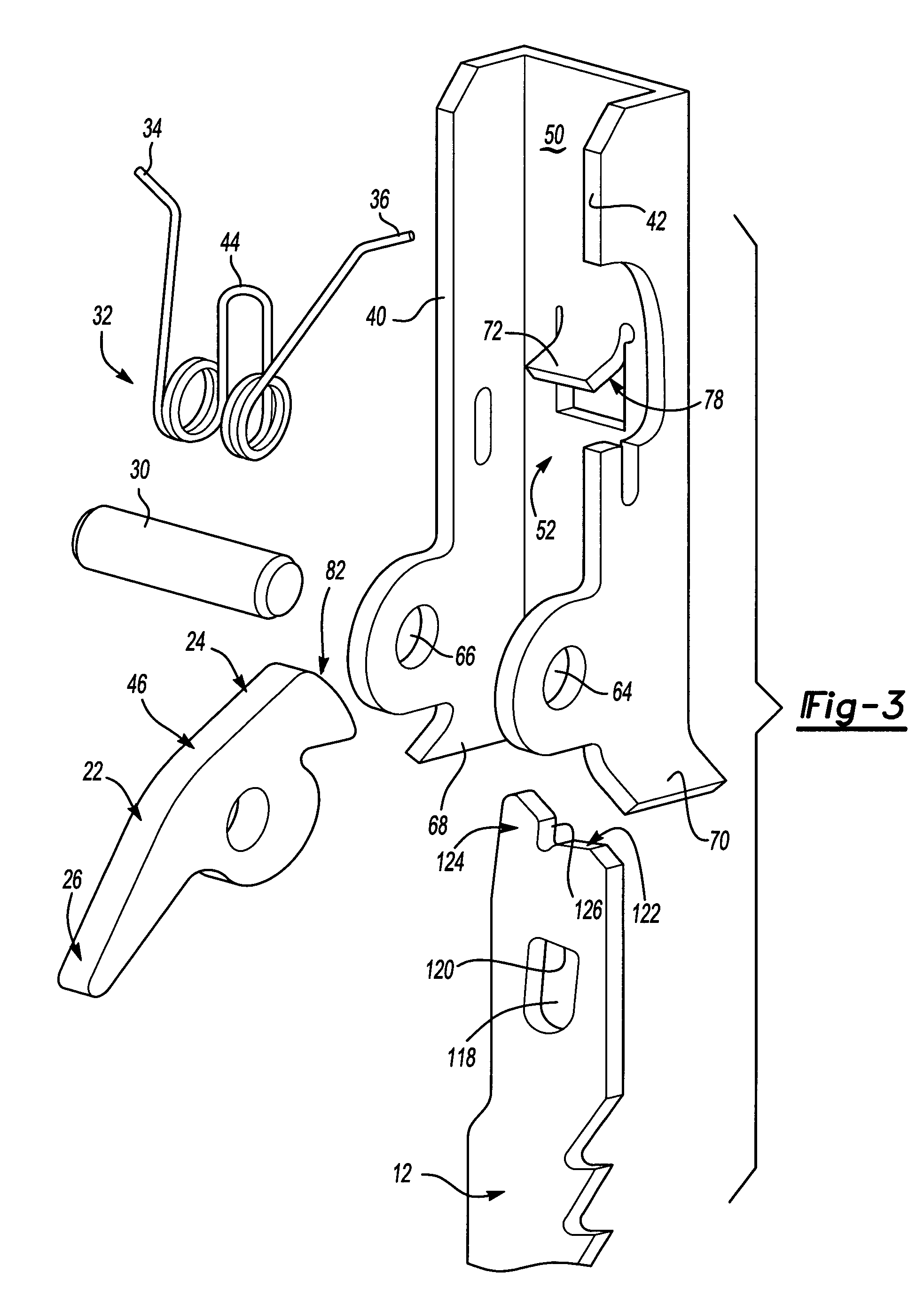Canted saw blade
a canted saw blade and cant angle technology, applied in the field of canted saw blades, can solve the problems of reduced blade strength, increased cost, and difficult to achieve higher cant angles
- Summary
- Abstract
- Description
- Claims
- Application Information
AI Technical Summary
Benefits of technology
Problems solved by technology
Method used
Image
Examples
Embodiment Construction
[0020]With initial reference to the perspective view of FIG. 1, a retaining mechanism or clamp device 20 according to the teachings of the present invention is illustrated within a housing 11. The housing 11 includes push button 8 which is operable to disengage the clamp device 20. The clamp device 20 is shown operatively interconnected to a conventional jig saw 10 and is configured to securely retain a plurality of saw blades having a variety of thicknesses. For example, as shown in FIG. 5, the clamp device 20 is configured to securely retain a first or second blade 12, 12′ with different thicknesses.
[0021]For exemplary purposes, blades 12 and 12′ are provided in the illustrations. Blade 12 has a thickness A of 0.035 inches (0.89 mm) and blade 12′ has a thickness A′ of 0.05 inches (1.27 mm). Blades 12 and 12′ generally fit the “thin” and “thick” blade categories respectively.
[0022]With continued reference to FIG. 1, and additional reference to FIGS. 2 and 3 wherein the housing 11 a...
PUM
| Property | Measurement | Unit |
|---|---|---|
| angle | aaaaa | aaaaa |
| angle | aaaaa | aaaaa |
| thickness | aaaaa | aaaaa |
Abstract
Description
Claims
Application Information
 Login to View More
Login to View More - R&D
- Intellectual Property
- Life Sciences
- Materials
- Tech Scout
- Unparalleled Data Quality
- Higher Quality Content
- 60% Fewer Hallucinations
Browse by: Latest US Patents, China's latest patents, Technical Efficacy Thesaurus, Application Domain, Technology Topic, Popular Technical Reports.
© 2025 PatSnap. All rights reserved.Legal|Privacy policy|Modern Slavery Act Transparency Statement|Sitemap|About US| Contact US: help@patsnap.com



